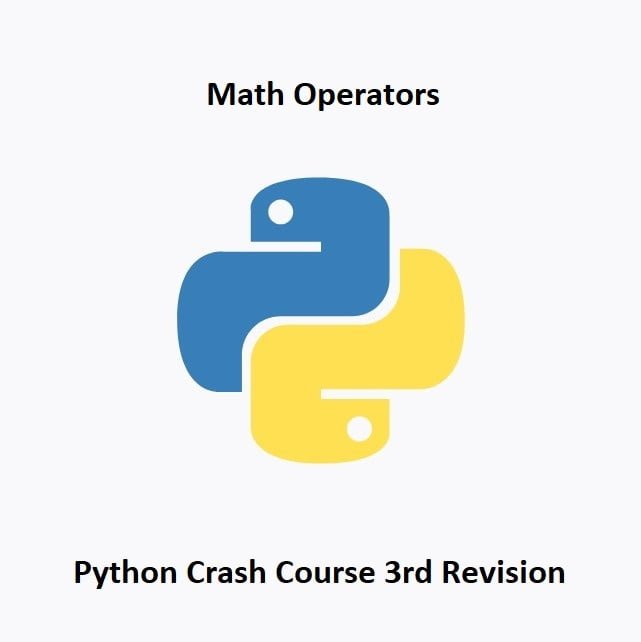+- Addition and SubtractionExample with Precedence:
result = 5 + 3 * 2
In this example, the multiplication (*) takes precedence, so result will be 11, not 16.

+- Addition and Subtractionresult = 5 + 3 * 2
In this example, the multiplication (*) takes precedence, so result will be 11, not 16.
Your final score: 0 / 0
Math operators form the backbone of computational tasks in Python, offering an array of tools to manipulate numerical data efficiently. Mastery of these operators empowers developers to create algorithms, solve mathematical problems, and handle data manipulation with ease. By embracing the versatility of math operators, programmers can craft elegant solutions to diverse challenges within the realm of Python programming.
In the next installment of this Python Crash Course, we will be learning all about Loops
That’s All Folks!
You can explore more of our Python guides here: Python Guides

In Python programming, math operators are the building blocks for performing numerical computations. From simple addition to complex mathematical operations, understanding these operators unlocks the ability to manipulate data dynamically. Let’s embark on a journey to unravel the capabilities of math operators in this Python crash course guide. Learn how they enable us to solve problems, process data, and create powerful algorithms.
(+):result = 5 + 3 # result will be 8
(-):result = 10 - 4 # result will be 6
(*):result = 3 * 5 # result will be 15
(/):result = 10 / 2 # result will be 5.0
(//):result = 10 // 3 # result will be 3
(%):result = 10 % 3 # result will be 1
(**):result = 2 ** 3 # result will be 8
(-)x = 10 negative_x = -x # negating the value of x print(negative_x) # Output will be -10Similarly, if the number is negative, applying the negation operator will change it to a positive value:
y = -7 positive_y = -y # negating the value of y print(positive_y) # Output will be 7The negation operator can be used with variables or directly with numerical values to change their signs, making it a fundamental part of arithmetic operations in Python.
(==)(!=)(>)(<)(>=)(<=)result = 5 > 3 # result will be True
In Python, operators have precedence rules that determine the order in which operations are performed. For example, multiplication and division take precedence over addition and subtraction. You can use parentheses to specify the order of operations explicitly. If any of these symbols are used together in a single command, you will need to remember the order in which each operator will execute.
Order of Precedence:
() Parenthesis** Exponent/ Multiplication and Division+- Addition and Subtractionresult = 5 + 3 * 2
In this example, the multiplication (*) takes precedence, so result will be 11, not 16.
Your final score: 0 / 0
Math operators form the backbone of computational tasks in Python, offering an array of tools to manipulate numerical data efficiently. Mastery of these operators empowers developers to create algorithms, solve mathematical problems, and handle data manipulation with ease. By embracing the versatility of math operators, programmers can craft elegant solutions to diverse challenges within the realm of Python programming.
In the next installment of this Python Crash Course, we will be learning all about Loops
That’s All Folks!
You can explore more of our Python guides here: Python Guides
